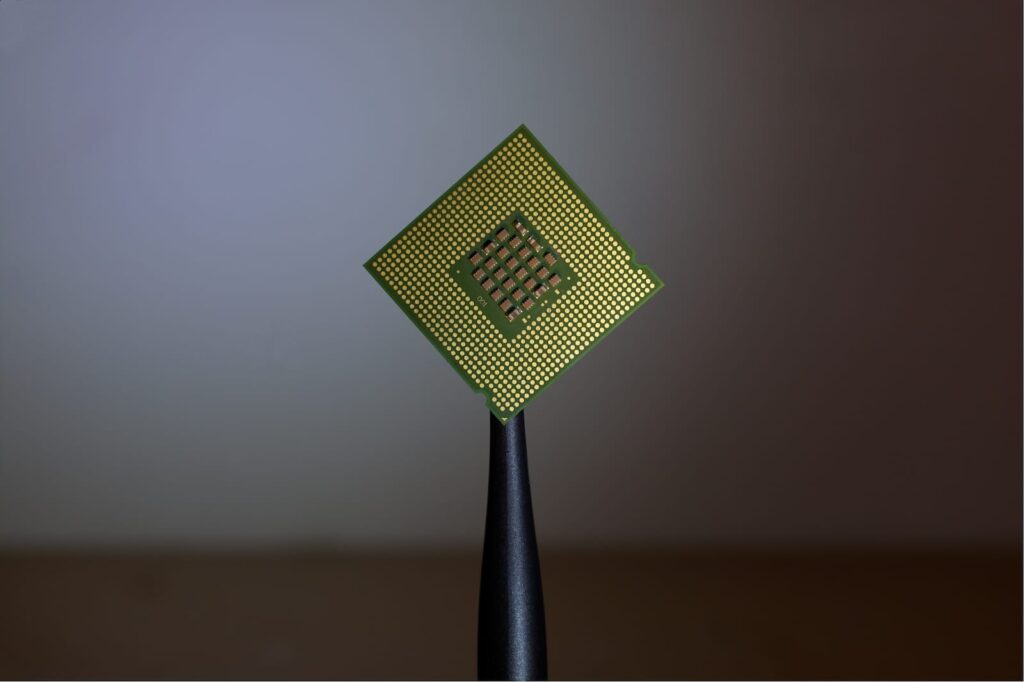In the high-stakes world of data centers, where every processing cycle counts and every watt translates to operational costs, an epic battle is quietly raging at the heart of millions of servers. Intel, the historic processor giant, now faces four formidable adversaries that are redefining the rules of the game: AMD with its EPYC processors, ARM with its revolutionary architecture, RISC-V as the open-source disruptor, and emerging Chinese brands seeking technological independence.
AMD: The Classic Rival Reborn from the Ashes
For years, AMD was considered Intel’s “little brother” in the server market. However, this perception changed dramatically with the launch of its EPYC lineup. Like David facing Goliath, AMD achieved the unthinkable: wresting significant market share from the dominant Intel.
AMD’s EPYC 9004 series (Genoa and Bergamo) has become a true performance beast, offering configurations of up to 96 cores with 192 threads, and even 128-core models optimized for cloud workloads. But the numbers only tell part of the story. What really makes the difference is the Zen 4 architecture, which provides exceptional performance per watt consumed.
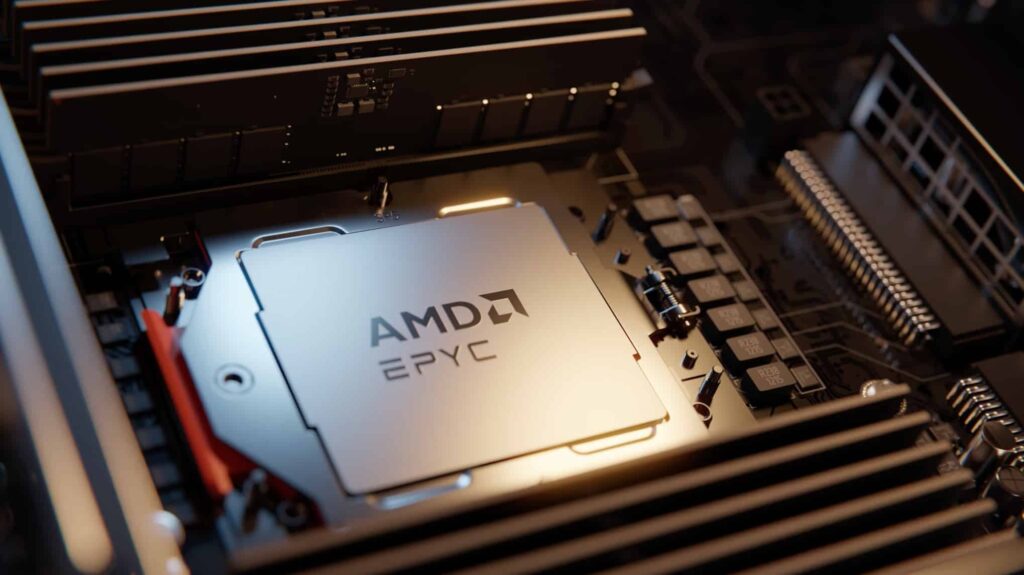
“When I talk performance with clients, the first thing they ask about is cores. In 2025, AMD EPYC is a beast in this department”, explains a server infrastructure specialist. This core advantage translates to superior virtualization capability: a 96-core EPYC processor can host significantly more virtual machines per socket than a 60-core Intel Xeon.
Additionally, AMD has bet heavily on memory. With 12 memory channels compared to Intel’s 8, EPYC processors feed greater bandwidth to virtual machines, a critical factor in high-density environments. AMD’s SEV (Secure Encrypted Virtualization) technology also provides VM-level encryption, a feature Intel is still developing fully with its TDX technology.
In terms of market share, AMD has reached 27.2% of the x86 CPU market for servers, and when limited to large datacenter models, EPYC processors represent an impressive 35.9% versus Intel’s Xeon-SP, setting a historical record for the company.
ARM: The Silent Disruptor from the Outside
If AMD represents the natural evolution of x86 competition, ARM constitutes a complete revolution. This British architecture, traditionally associated with mobile devices, has burst into the server market with an irresistible value proposition: superior energy efficiency.
ARM Holdings expects to capture 50% of the datacenter CPU market by the end of 2025, a spectacular leap from the 15% it held in 2024. This ambitious projection is based on the explosive growth of AI-specialized servers, where ARM processors act as “traffic controllers” for other AI chips.
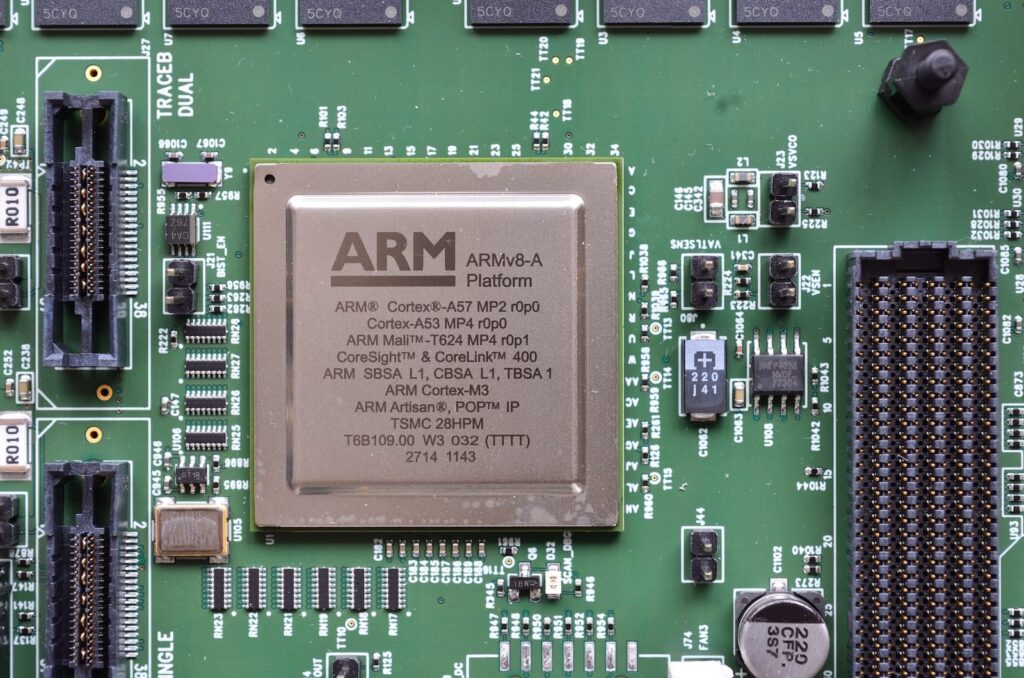
The most visible use case is the NVIDIA Grace CPU, an ARM-based chip that pairs with NVIDIA’s Blackwell AI processors. Amazon Web Services already deploys more than 2 million custom Graviton chips in the cloud, while Microsoft and Google have developed their own ARM processors: Cobalt 100 and Axion, respectively.
ARM’s key advantage lies in its reduced power consumption. In an era where datacenters consume massive amounts of electricity, especially those dedicated to AI, energy efficiency has become a fundamental requirement, not just a competitive advantage.
“AWS alone is set to deploy over 1.2 million Arm CPUs in their servers this year”, according to industry analysts. However, more conservative estimates suggest that ARM-based servers will represent between 20% and 23% of the global market by 2025, a figure significantly lower than ARM’s projections but still impressive.
RISC-V: The Open Source Promise of Total Freedom
If ARM represents an energy revolution, RISC-V constitutes a philosophical revolution. This open-source architecture, initially developed at the University of California, Berkeley, is emerging as the third disruptive force in the server market, promising something no previous competitor had offered: total design freedom without licensing restrictions.
The RISC-V SoC market reached $6.1 billion in 2023, a growth of 276.8% over 2022, and is projected to grow to $92.7 billion by 2030. But the numbers only tell part of the story. What’s truly revolutionary is that RISC-V allows any company to design custom processors without paying royalties or depending on proprietary architectures.
“RISC-V makes the most sense in novel applications, where a developer doesn’t already have an existing Arm product in place”, explains a specialist analyst. Between 2024 and 2030, RISC-V-based chip shipments are expected to increase by 50% annually, reaching a peak of 17 billion chips shipped in 2030 alone.
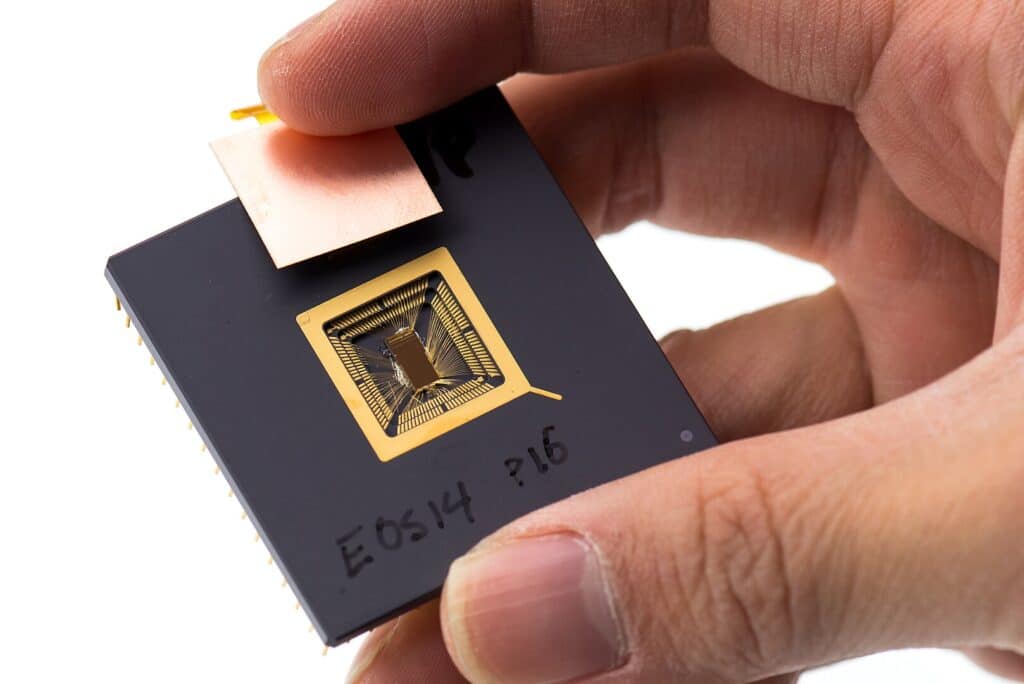
RISC-V’s appeal lies in its extreme flexibility. Unlike x86 or ARM, where developers must adapt to architectural limitations, RISC-V allows creating completely customized processors for specific applications. This capability has attracted the attention of tech giants: NVIDIA has quietly folded RISC-V cores into its GPUs and SoCs, and expects to ship a billion RISC-V cores across its products by the end of 2024.
The architecture is also gaining ground in critical applications. NASA recently selected SiFive’s RISC-V cores as the main CPU for the high-performance spaceflight computing (HPSC) processor, demonstrating that RISC-V can compete even in the most demanding environments.
The Dragon Awakens: Chinese Brands on the Rise
The fourth competitor in this battle is perhaps the most intriguing: China, with its national brands desperately seeking technological independence. Under pressure from U.S. sanctions, Chinese companies have dramatically accelerated their processor development efforts, creating a domestic industry that’s already producing surprising results.
Loongson: The National Champion
Loongson Technology has positioned itself as the flagship of Chinese processors. Its new 64-core 3E6000 features performance equivalent to Intel’s Xeon 8380 based on the 2019 Ice Lake architecture. While still several years behind Intel and AMD’s latest offerings, the progress has been notable.
The 3C6000 uses China’s independently developed LoongArch instruction set architecture (ISA), relying on no foreign-licensed technology or overseas supply chains. This technological independence is crucial for China, which seeks to reduce its dependence on Western technologies.
The company isn’t stopping there. Loongson is already developing entirely new CPU and core architectures that will provide significantly more performance than the 3E6000, including the upcoming 3B6600 that will supposedly provide Intel Raptor Lake 13th/14th generation-class performance.
Alibaba: The RISC-V Giant
Alibaba, through its DAMO Academy research division, has made a bold bet on RISC-V. Its XuanTie C930 processor, designed for high-performance servers, represents the first server-grade CPU fully developed by the company.
The C930 is a 64-bit multi-core processor with superscalar, out-of-order execution and a 16-stage pipeline microarchitecture, compatible with the RISC-V RVA23 Profile. This compatibility is crucial because it specifies hypervisor extensions essential for server and cloud deployment.
Alibaba’s strategy is ambitious. The company plans to invest at least 380 billion yuan ($52 billion) in AI and cloud infrastructure over the next three years, with the C930 as the centerpiece of this strategy.
The XiangShan Project: World-Class RISC-V
China is also betting heavily on RISC-V at the institutional level. The XiangShan project from the Chinese Academy of Sciences aims to deliver a high-performance RISC-V processor by 2025. This project uses the open-source Mulan PSL-2.0 license, allowing anyone to adopt the design.
Chinese researchers began developing the XiangShan family of chips in 2020, and the K100 chip design is open source, meaning anyone can take up the design.
Industry Impact: A New Multipolar Era
This quadruple competition is fundamentally transforming the server landscape. Intel, which maintained almost absolute dominance for decades, now faces pressure from multiple fronts simultaneously. The company is preparing its response with Clearwater Forest, a new server CPU family based on the Intel 18A process, which will include 3D cache technology called “Local Cache” for the first time.
For enterprise consumers, this new multipolar reality translates to tangible benefits but also more complex decisions. Organizations can now choose between:
- Mature x86 ecosystems (Intel and AMD) with widely supported software
- ARM energy efficiency for specific workloads
- Total RISC-V flexibility for custom applications
- Chinese solutions that promise geopolitical independence in exchange for performance
The Geopolitics of Processors
The geopolitical dimension adds an unprecedented layer of complexity. U.S. export restrictions have paradoxically accelerated Chinese innovation, creating a parallel technological ecosystem that could eventually compete on equal terms with the West.
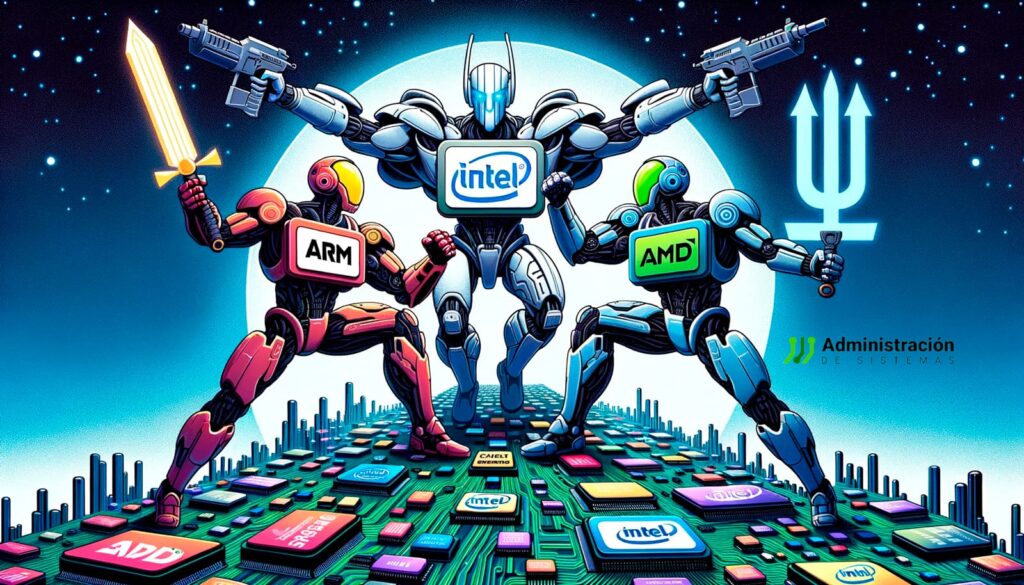
China is applying a multifaceted strategy: developing proprietary architectures like LoongArch, betting heavily on RISC-V as an open-source alternative, and creating strategic alliances between its major tech companies. The Chinese government has issued guidance promoting widespread use of RISC-V throughout the country, signaling a strategic transition toward technologies that cannot be sanctioned.
Market Future: An Ecosystem in Transformation
Data projects a server market that will reach $366 billion in 2025, driven primarily by AI infrastructure demand. In this context, each architecture is betting on different strengths:
- Intel: Mature ecosystem, specialized accelerators, and legacy compatibility
- AMD: Raw performance, superior core density, and improved memory
- ARM: Energy efficiency and hyperscaler adoption
- RISC-V: Design flexibility and absence of royalties
- Chinese brands: Geopolitical independence and competitive costs
Convergence Toward Customization
An emerging pattern is convergence toward customization. Major cloud providers are developing their own processors (Amazon Graviton, Google Axion, Microsoft Cobalt), while Chinese companies leverage RISC-V and proprietary architectures to create solutions specific to their needs.
This trend toward “custom silicon” is fragmenting the market but also creating opportunities for more flexible architectures like RISC-V. “You can own your design in RISC-V in a way that you simply can’t with a licensed ISA”, explains a sector analyst.
Long-Term Implications
The current battle is defining not only the present but the future of enterprise computing. Architecture diversification reduces the risk of dependence on a single vendor but also complicates software development and infrastructure management.
By 2030, we’re likely to see a truly multipolar market where no single architecture completely dominates. Intel will maintain its strength in traditional enterprise applications, AMD will continue gaining ground in pure performance, ARM will dominate in energy efficiency, RISC-V will emerge in specialized applications, and Chinese brands will consolidate their position in their domestic market and potentially in developing markets.
The battle is far from decided, but one thing is clear: the absolute dominance of a single company has come to an end. The real winners are end users, who benefit from accelerated innovation, more diverse options, and the promise of more efficient and specialized technologies than ever before in enterprise computing history.
In this new multipolar era, the future belongs not only to whoever can create the fastest processor, but to whoever can best adapt to an ecosystem where flexibility, energy efficiency, and geopolitical independence are as important as raw performance.

